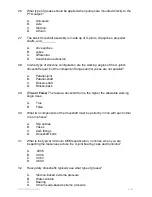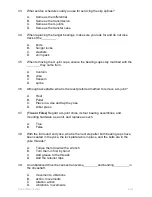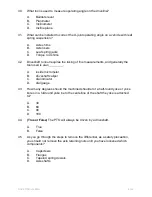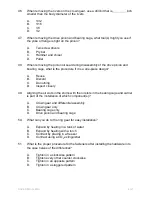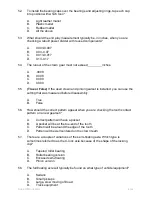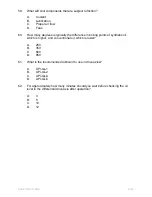
situation. Caution should be used when removing the axles to allow the wheels to free-
wheel. The equipment should be secured either with wheel chocks or a tow hook to
another piece of towing equipment to prevent accidental movement.
5.1.4 ving Wheels Full-Track
Wheels attached to live axles are the driving wheels. The number of driving wheels is
sometimes used to identify equipment. You, as a mechanic, may identify a truck by the
gasoline or diesel engine that provides the power. Then again, you may refer to it as a
bogie drive.
Wheels attached to the outside of the driving wheels make up dual wheels. Dual wheels
give additional traction to the driving wheels and distribute the weight of the vehicle over
a greater area of road surface. They are considered as single wheels in describing
vehicles; for example, a 4 x 2 could be a passenger car or a truck having four wheels
with two of them driving. A 4 x 4 indicates a vehicle having four wheels with all four
driving. In some cases, these vehicles will have dual wheels in the rear. You would
describe such a vehicle as a 4 x 4 with dual wheels.
A 6 x 4 truck, although having dual wheels in the rear, is identified by six wheels, four of
them driving. Actually, the truck has ten wheels, but the four wheels attached to the
driving wheels could be removed without changing the identity of the truck. If the front
wheels of this truck were driven by a live axle, it would be called a 6 x 6.
The tracks on track-laying vehicles are driven in much the same manner as wheels on
wheeled vehicles. Sprockets instead of wheels are driven by live axles to move the
tracks on the rollers. These vehicles are identified as full-track, half-track or vehicles
that can be converted.
5.2.0 Service and Maintenance
The efficiency and life of mechanical equipment are as dependent on proper lubrication
as they are on sound engineering design.
Proper lubrication depends on using the right type of lubricant at the proper intervals
and maintaining the specified capacities. The recommended lubrication practices and
specifications are general in nature and typical of manufacturer's procedures. It is
always advisable to refer to the service manual for detailed procedures.
5.2.1 Drive Axle Lubrication
Mechanics who perform service on vehicles and off-road equipment must understand
the importance of following the manufacturer's maintenance procedures. Many of the
axle-related failures are caused by using a lubricant that is not meant for the application.
This will result in a shorter component life than could be otherwise achieved. Many
failures could be prevented by following sound maintenance practices concerning
lubrication selection and use. Axle failures can and have produced many undesirable
consequences. When lubrication levels are not properly maintained in axles, the life of
the bearings and gears will be adversely affected, shortening their life or often leading to
catastrophic failures. Regardless of how well the equipment is designed and operated if
it is not properly maintained, premature axle component wear will occur and most
definitely lead to early failure. Although some failures are caused by improper
installation of components, mechanics need to make themselves aware of correct
methods and ensure that the proper replacement parts and tools are used to assemble
the components.
NAVEDTRA 14050A
8-95
























